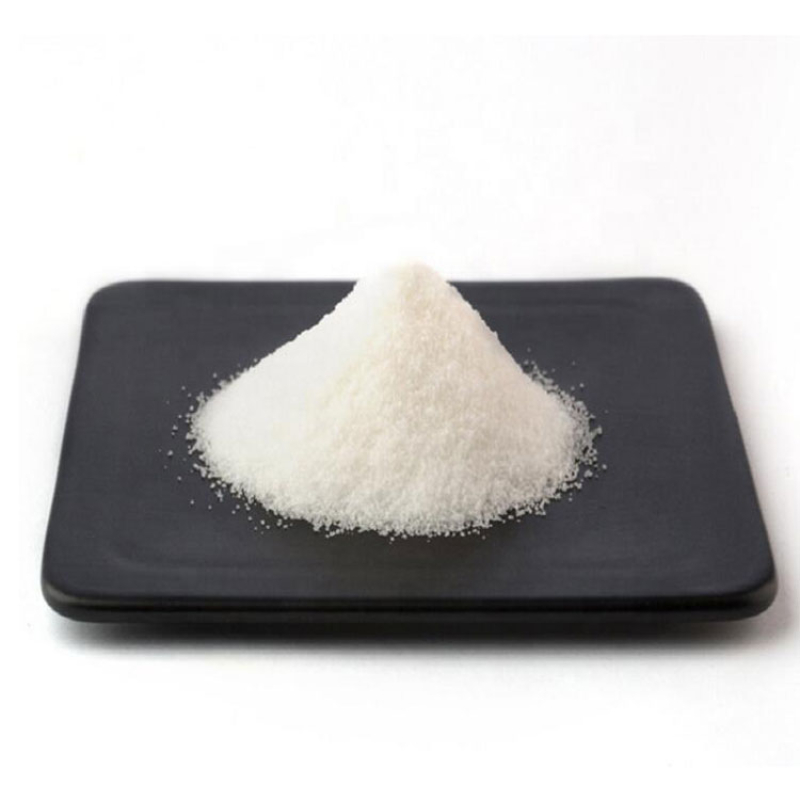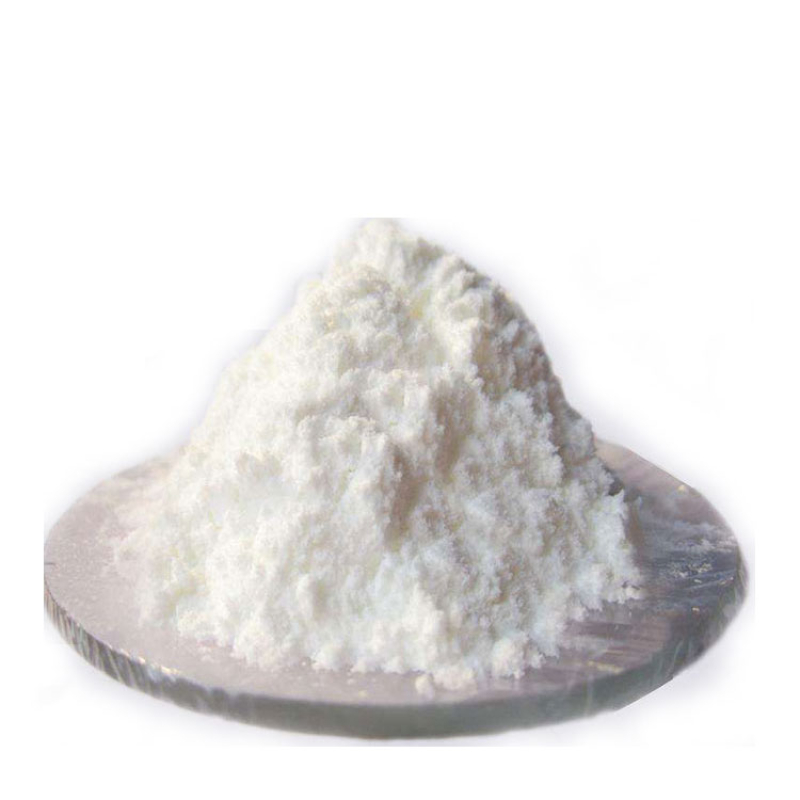Products Description of Tetrabutylammonium hydroxide CAS#2052-49-5Tetrabutylammonium hydroxide is an organic compound with the chemical formula C16H37NO.
Contact Now
Products Description of Tetrabutylammonium hydroxide CAS#2052-49-5Tetrabutylammonium hydroxide is an organic compound with the chemical formula C16H37NO.
Contact Now
Products Description of Tetrabutylammonium iodide CAS#311-28-4Tetrabutylammonium iodide (TBAI) is a commonly used phase transfer catalyst that can increase the reaction rate or effectively promote a variety of chemical reactions. This reagent can be used as an iodine source to generate the iodide required for the reaction in situ, avoiding the use of some unstable and expensive iodides.
Contact Now
Products Description of Tetrabutylammonium Iodide COA#311-28-4Tetrabutylammonium iodide (TBAI) is a commonly used phase transfer catalyst that can increase the reaction rate or effectively promote a variety of chemical reactions. This reagent can be used as an iodine source to generate the iodide required for the reaction in situ, avoiding the use of some unstable and expensive iodides.
Contact Now
Products Description of Tetrabutylammonium bromideCAS#1643-19-2Tetrabutylammonium bromide is a common chemical product on the market.
Contact Now
Products Description of Tetrabutylammonium Perchlorate CAS#1923-70-2Tetrabutylammonium perchlorate is used as a research compound, in medicine, and as an electrolyte in electrochemical gradeTetrabutylammonium perchlorate Chemical PropertiesMelting point 211-215 °Cdensity 1.0387 (rough estimate)refractive index 1.6800 (estimate)solubility acetonitrile: 0.1 g/mL, clear, colorlessform Crystalline Powdercolor WhiteWater Solubility Soluble in acetonitrile and ethanol.
Contact Now
Products Description of Tetramethylammonium hydroxide CAS#75-59-2Tetramethylammonium hydroxide (TMAH), also known as tetramethylammonium hydroxide, is a colorless to light yellow liquid. It is the strongest organic base, very easy to absorb moisture, has a certain ammonia smell, can quickly absorb carbon dioxide in the air, has a low vapor pressure at room temperature, and is completely decomposed and gasified at 135~145°C. High-purity products are treated at 140°C without trace residue. The tetramethylammonium hydroxide solution is colorless, transparent, and has a slight ammonia smell.
Contact Now
Products Description of Tetrabutylammonium hydrogen sulfate CAS#32503-27-8Tetrabutyl quaternary ammonium salts are phase transfer catalysts with superior performance. Tetrabutylammonium hydrogen sulfate buffer salt system is often used as an aqueous mobile phase in reversed-phase liquid chromatography detection. However, the stability of the tetrabutylammonium hydrogen sulfate buffer salt system gradually decreases with the increase of tetrabutylammonium hydrogen sulfate concentration.
Contact Now
Products Description of Tetrabutylammonium Bromide CAS#1643-19-2 Tetrabutylammonium bromide is a common chemical product on the market.
Contact Now
Products Description of Sodium Hydroxide CAS#1310-73-2Sodium hydroxide, also known as caustic soda and caustic soda, has the chemical formula NaOH. It is a highly corrosive strong base, usually in white flakes or granules. It can be mixed with water to form an alkaline solution, and can also be dissolved in methanol and ethanol. This alkaline substance is deliquescent and will absorb water vapor in the air, as well as acidic gases such as carbon dioxide. Sodium hydroxide is one of the commonly used chemicals.
Contact Now
Products Description of Sodium hydroxide CAS#1310-73-2Sodium hydroxide, also known as caustic soda and caustic soda, has the chemical formula NaOH. It is a highly corrosive strong base, usually in white flakes or granules. It can be mixed with water to form an alkaline solution, and can also be dissolved in methanol and ethanol. This alkaline substance is deliquescent and will absorb water vapor in the air, as well as acidic gases such as carbon dioxide. Sodium hydroxide is one of the commonly used chemicals.
Contact Now
Products Description of Sodium hydroxide CAS#1310-73-2Sodium hydroxide, also known as caustic soda and caustic soda, has the chemical formula NaOH. It is a highly corrosive strong alkali, usually in the form of white flakes or granules. It can be miscible with water to form an alkaline solution, and can also be dissolved in methanol. and ethanol. This alkaline substance is deliquescent and will absorb water vapor in the air as well as acidic gases such as carbon dioxide. Sodium hydroxide is one of the commonly used chemicals.
Contact Now
Products Description of Tetraethylammonium hydroxide CAS#77-98-5Tetraethylammonium hydroxide is an organic quaternary ammonium base. Most products exist in the form of methanol and aqueous solution. It is a colorless to light yellow liquid at room temperature. It has strong alkalinity and can absorb carbon dioxide in the air and decompose upon heating. It has a wide range of uses in the field of industrial research. It is used as a phase transfer catalyst, a template for molecular sieve synthesis, a cleaning agent, and a de-impurity agent in the petroleum industry.
Contact Now
Products Description of Magnesium carbonate hydroxide CAS#39409-82-0This product is white monoclinic crystal with a relative density of 2.254. It is slightly soluble in water and easily soluble in dilute acid. It will foam and decompose in acid to release carbon dioxide. It will generate magnesium oxide and carbon dioxide when heated and calcined.Magnesium carbonate hydroxide Chemical Propertiesdensity 2.16RTECS FG1797000storage temp. 2-8°Cform Solidcolor WhiteOdorat 100.00?%. odorlessWater Solubility Soluble in water.
Contact Now
Products Description of Potassium Hydroxide CAS#1310-58-3 Potassium hydroxide is an inorganic compound with the chemical formula KOH. It is a common inorganic base with strong alkalinity. The pH of 0.1 mol/L solution is 13.5. It is soluble in water and ethanol, slightly soluble in ether, and easily absorbs moisture in the air to become deliquescent. It absorbs carbon dioxide to form potassium carbonate.
Contact Now
Products Description of Direct Triiron Tetraoxide CAS #1317-61-9Triiron tetroxide is obtained from its natural mineral magnetite. In the laboratory the compound may be prepared by adding sodium hydroxide solution to an aqueous solution of 1:2 molar mixture of ferrous and ferric salt. (i.e., 1 mol FeCl2 + 2 mol FeCl3).
Contact Now
Products Description of Magnesium oxide CAS#1309-48-4Magnesium oxide is commonly known as magnesia, also known as magnesium oxide. It is a typical alkaline earth metal oxide with the chemical formula MgO. It is a white powder with a melting point of 2852℃, a boiling point of 3600℃ and a relative density of 3.58 (25℃). It is soluble in acid and ammonium salt solutions. It reacts slowly with water to form magnesium hydroxide. It can be dissolved in a carbon dioxide aqueous solution to form magnesium bicarbonate.
Contact Now
Products Description of Direct Pigment Yellow 3 CAS#6486-23-3The pigment is a greenish light yellow powder with bright color. It can be dissolved in organic solvents such as ethanol and acetone when heated. It turns yellow when it meets concentrated sulfuric acid. The color remains unchanged in concentrated nitric acid, concentrated hydrochloric acid and dilute sodium hydroxide. It has good light resistance and heat resistance.
Contact Now
Products Description of Calcium hypochlorite CAS#7778-54-3The chemical formula of bleaching powder is CaCl2·Ca(ClO)2·2H2O. It is a white powdery substance. Its composition varies with the preparation conditions. It is generally a hydrated complex salt composed of calcium hypochlorite, calcium chloride and unreacted calcium hydroxide. Its active ingredient is calcium hypochlorite. Bleaching powder has strong oxidizing, corrosive and irritating properties. It can decompose when it comes into contact with water, ethanol or inorganic acid.
Contact Now
Products Description of Sodium amide CAS#7782-92-5Sodium amide, also known as sodium amide or sodium ammonia, is a white or olive green crystalline powder with an ammonia smell. Its chemical formula is NaNH2, its molecular weight is 39.01, its melting point is 210℃, and its boiling point is 400℃. It decomposes into sodium, nitrogen and hydrogen when heated to 500-600℃. It reacts violently with water to form sodium hydroxide and release ammonia gas. It is slightly soluble in liquid ammonia and reacts slowly with alcohol.
Contact Now
Products Description of Calcium chloride CAS#10043-52-4Calcium chloride, CaC12, is colorless deliquescent solid that is soluble in water and ethanol. It is formed from the reaction of calcium carbonate and hydrochloric acid or calcium hydroxide and ammonium chloride. It is used in medicine, as an antifreeze, and as a coagulant.Calcium chloride (CaCl2) has many uses. It is used as a drying agent and to melt ice and snow on highways, to control dust, to thaw building materials (sand, gravel, concrete, and so on).
Contact Now
Products Description of Sodium Oleate CAS#143-19-1Sodium oleate, also known as sodium octadecenoate, cis-9-octadecenol, oleyl alcohol, cis-9-octadecenol, (Z)-octadecenol, olive oil alcohol, cis-9-octadecen-1-ol, 9-n-octadecenol, octadecenol. It is an organic oil with the chemical formula C17H33CO2Na. Sodium oleate is the main component of soap made from olive oil and tallow soap. It can also be made by reacting sodium hydroxide with oleic acid. It is a compound composed of a hydrophobic group and a hydrophilic group.
Contact Now
Products Description of Sodium Oleate CAS#143-19-1Sodium oleate, also known as sodium octadecenoate, cis-9-octadecenol, oleyl alcohol, cis-9-octadecenol, (Z)-octadecene-9-enol, olive oil alcohol, cis -9-Octadecen-1-ol, 9-n-octadecenol, octadecenol. It is an organic oil with the chemical formula C17H33CO2Na. Sodium acid acid is the main component of soaps made from olive oil and other soaps. It is also the main component of tallow soap. It can also be produced by the reaction of sodium hydroxide and oleic acid. It is a compound composed of hydrophobic and hydrophilic groups.
Contact Now
Products Description of Sodium MethoxideCAS#124-41-4Sodium methoxide is also called sodium methoxide. It is a kind of alcohol salt generated by methanol, with the chemical formula CH3ONa. It is a strong base commonly used in organic synthesis. Sodium methoxide is usually stored as a solution in alcohol solvents such as methanol and ethanol. It dissolves in ether to form a suspension, is sensitive to moisture, and decomposes into methanol and sodium hydroxide when it comes into contact with water: CH3ONa+H2O→CH3OH+NaOH. Sodium methoxide products come in two forms: solid and liquid.
Contact Now


































